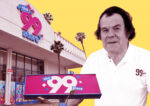Trending
Predicting the 2013 market
As the fiscal cliff loomed over the last hours of 2012, real estate players weighed in with market forecasts

Although the European debt crisis seems to be further from investors’ minds today than it was a year ago, fresh hurdles like the fiscal cliff standoff in Washington, prospective tax changes and a New York City mayoral election loom. And those are not the only questions that industry pros are pondering as 2013 gets underway. Also on their minds: Will the tech sector continue to prop up commercial leasing? What kinds of housing stock will move — and what will languish on the market? Where will the next wave of retail condo sales take place? And which overall sectors of the market will investors gravitate towards?
This month, The Real Deal talked to New York City real estate insiders from several different sectors of the market to get their industry predictions for 2013.
Investment sales
Greater threshold for risk
Those who follow Manhattan’s commercial sales market predict that investors will shift their attention this year — and the result could be more new development projects.
“Because existing assets have gotten so expensive, I think you will see investors go further out into the risk spectrum and decide it may make sense to develop or redevelop property instead of buying [existing assets],” said Dan Fasulo, managing director at Manhattan-based research firm Real Capital Analytics. “We are at the point in the [recovery] cycle where the spread between buying and building will tempt investors to build.”
Indeed, when it comes to buying existing properties, challenges remain: There is too much capital for the number of buildings being sold. And, analysts say, owners are reluctant to sell because they aren’t sure where to invest their funds next.
“It’s clear owners prefer owning well-located bricks to owning paper,” said Peter Hauspurg, chairman and CEO of the investment sales brokerage Eastern Consolidated.
Still, as investors’ worries about inflation foment, many are scrambling to get capital into the real estate market, and to get projects started with financing at today’s low interest rates, experts said.
In 2013, Hauspurg said, the most active sector for investors seeking “high-powered yields” will be condominium development, particularly in the outer boroughs — a shift from the post-Lehman years, when investors rushed to buy up multi-family properties and trophy office assets.
Office leasing
The tech sector question mark
While 2012 saw deal volume plummet, industry pros say that commercial leasing could have fared far worse, given that the financial services sector — the motor behind New York City’s office market — shed jobs last year.
“There is not a lot of velocity, but at the same time there has not been this great increase in vacancy” in 2012, said Eastern’s Hauspurg, adding that the much-ballyhooed technology sector has picked up the slack.
But the major question mark for this year is whether the tech sector will be a lasting economic force. “Is the start-up dynamic going to continue? It all feels very Internet circa 1998,” said Nat Rockett, Executive Vice President at Cushman & Wakefield, of the tech industry’s recent New York leasing spree.
He pointed to the fleeting success of some tech companies as cause for continued uncertainty in the leasing market.
“I remember six months ago everybody who had space in Soho said, ‘Zynga will take it.’ Now it’s like — ‘Guess what? Zynga doesn’t look like it will survive 2013,’” he said of the online game developer. And while some tech firms have ventured from their preferred Midtown South market (because of the lack of inventory and increased prices there) to find cheaper space Downtown, not all areas are benefiting from the spillover. Rockett, for example, said the tight market in Midtown South has done nothing for submarkets that are suffering, such as the Plaza District.
Residential rentals
Pricing nears tipping point
The Manhattan rental market has been white hot for some time. And the high end of the rental market will continue to fare well, thanks to international renters looking for New York City homes.
“Tight credit is definitely helping drive the upper end of the rental market,” said Larry Friedman, principal at brokerage AC Lawrence.
But at the middle and bottom of the market, renters are increasingly resisting rising rents.
“There will be a tipping point where you start pricing people out of the marketplace,” predicted Gary Malin, president of brokerage Citi Habitats.
Indeed, the middle and low segments of the rental market are also seeing an increasing number of renters take the plunge and purchasing, given the record-low interest rates. And, as TRD reported last month, Citi Habitats found that rental prices in Manhattan dropped across all apartment types between October and November, and that overall Manhattan rents slid $76 to $3,368 during that time.
“The pace of increase [in rents] has slowed in the last two months, year over year,” Jonathan Miller, president of Miller Samuel, the real estate data firm, told TRD at the time. “We could be reaching some sort of threshold; we’re getting more resistance to the rising rental market.”
With a lack of large-scale new rental developments in Manhattan, Malin said he expected new, amenity-rich buildings in the outer boroughs to continue to see strong activity, and noted that there may be more development of that sort as well.
“There are nice amenities at a significant discount to Manhattan,” Malin said, pointing to new rental construction in Brooklyn and Queens.
But, generally, expect more of the same in the rental market next year, real estate executives said. “I think the vacancy rate will hover right around where it is, and concessions will continue to play the same role they’ve been playing” — that of a marketing tool for new buildings — not a financial incentive landlords feel they must provide, Malin said.
Residential sales
More One57-type condos on horizon
Some sectors of the residential sales market could falter next year as foreign and domestic buyers seek different products from one another, sources say. That desire for different types of housing will intensify a growing chasm between the market for new construction — which often appeals most to foreign buyers — and for townhomes and co-ops, said Frederick Peters, president of Warburg Realty.
In 2013, expect tonier co-ops to sit on the market, as sellers emboldened by headlines about rising prices in New York City list their homes for ever-higher sums, Peters said.
“We’ve seen a lot of major inventory sit … because buyers are not willing to throw money at it unless they think it’s spectacular,” he said.
CORE broker Michael Graves said he expected inventory to increase. But in the wake of the Presidential election and once the fiscal cliff is resolved — no deal had been reached at press time — sellers will be more likely to pull the trigger, he said.
“We will see a healthier dose of inventory in the first and second quarters [first],” Graves predicted.
Not everyone agreed with that assessment, however.
Miller predicted that supply will likely remain constrained, which will lead to modest price appreciation. International buyers are not going anywhere either, Miller said, which could also buoy prices.
“For all our problems [New York City’s market is] the lesser of all evils, and I see that continuing in 2013 because what’s driving [buyers here] doesn’t have a short-term solution — a softening economy in China and an economic bubble in South America,” he said.
Given those factors, additional super-luxury developments are rising, as the development community salivates over moneyed foreigners.
“You may see more One57s and 432 Park [Avenues],” Miller said, referring to Extell Development’s under-construction tower on West 57th Street and to the residential project that the CIM Group and developer Harry Macklowe just broke ground on.
Retail
Side-street spillover effect
Last year was a strong year for Manhattan retail with big retail condo sales and rising rents. And some say that momentum is not likely to let up this year.
“[This year] is only going to get better,” said Kelly Gedinsky, a broker with Winick Realty, noting that rents climbed by as much as 30 percent quarter over quarter on certain retail strips in 2012’s third quarter, the most recent data available at press time.
Prices surged mostly in prime locations like Madison and Fifth avenues as well as in Times Square, Herald Square, the Meatpacking District and Soho. And Gedinsky predicted that those high rents will spill over to nearby side streets.
In the Meatpacking District, more tenant interest has already been focused on Little West 12th and West 13th streets as retailers have moved beyond 14th Street. The same is true in Soho for Mercer, Greene and Wooster streets, where activity has been boosted because there are so few vacancies along Spring and Prince streets, she said. But Gedinsky said she expected to see more side streets adjacent to busy retail strips benefit from this spillover trend this year.
But even as rents and activity rise in certain areas, others — notably along Second Avenue on the East Side, where the construction of the subway has killed activity for some time now — are stagnant or dropping, brokers said.
Areas where revenues are not driven by tourism could suffer from ongoing depressed rents, said Jedd Nero, a retail broker with the CBRE Group. “When there is a blip, it’s the local players who bleed faster,” he said.
Meanwhile, on pricey Fifth Avenue, a number of large blocks of space are coming to market next year. At Thor Equities’ 520 Fifth, about 77,000 square feet is due to come online, and at Crown Acquisitions’ 530 Fifth, about 42,000 square feet should be available, Nero said. He predicted that retailers might end up sharing the spaces in unconventional arrangements, since there aren’t that many tenants interested in such large blocks of space.




